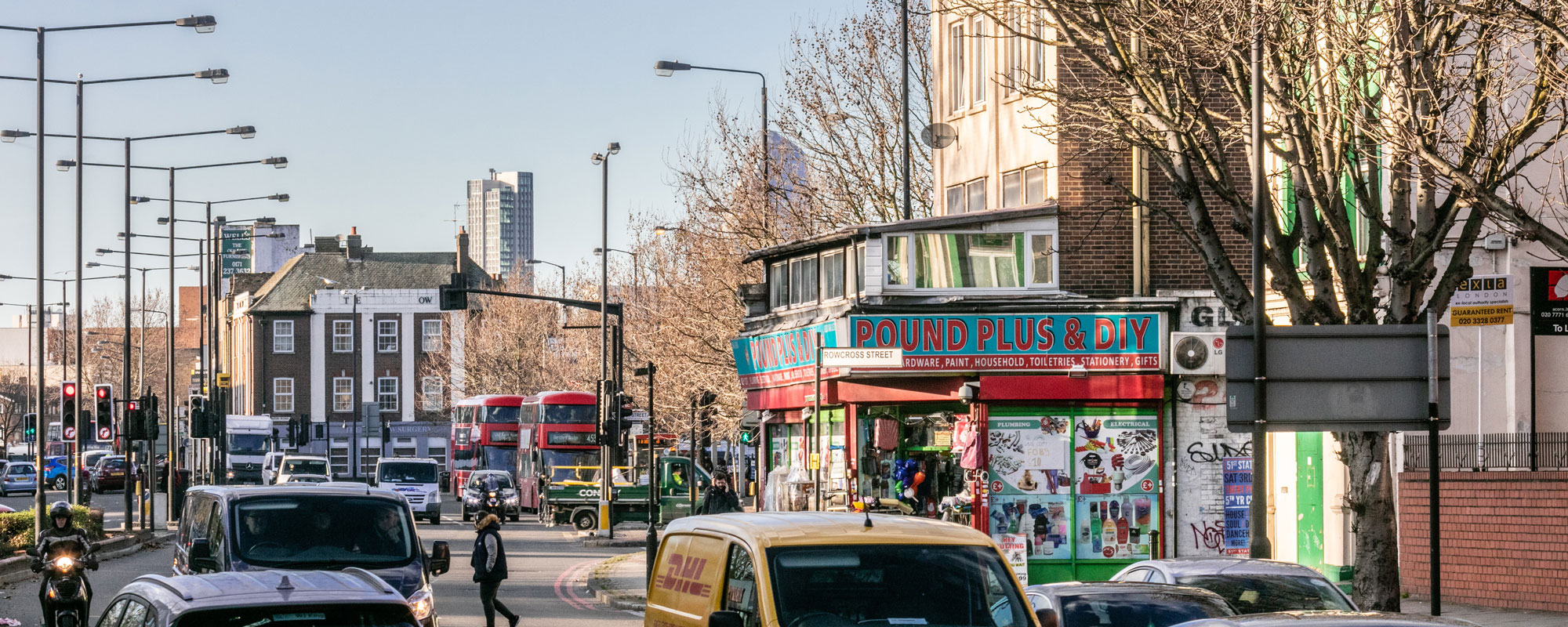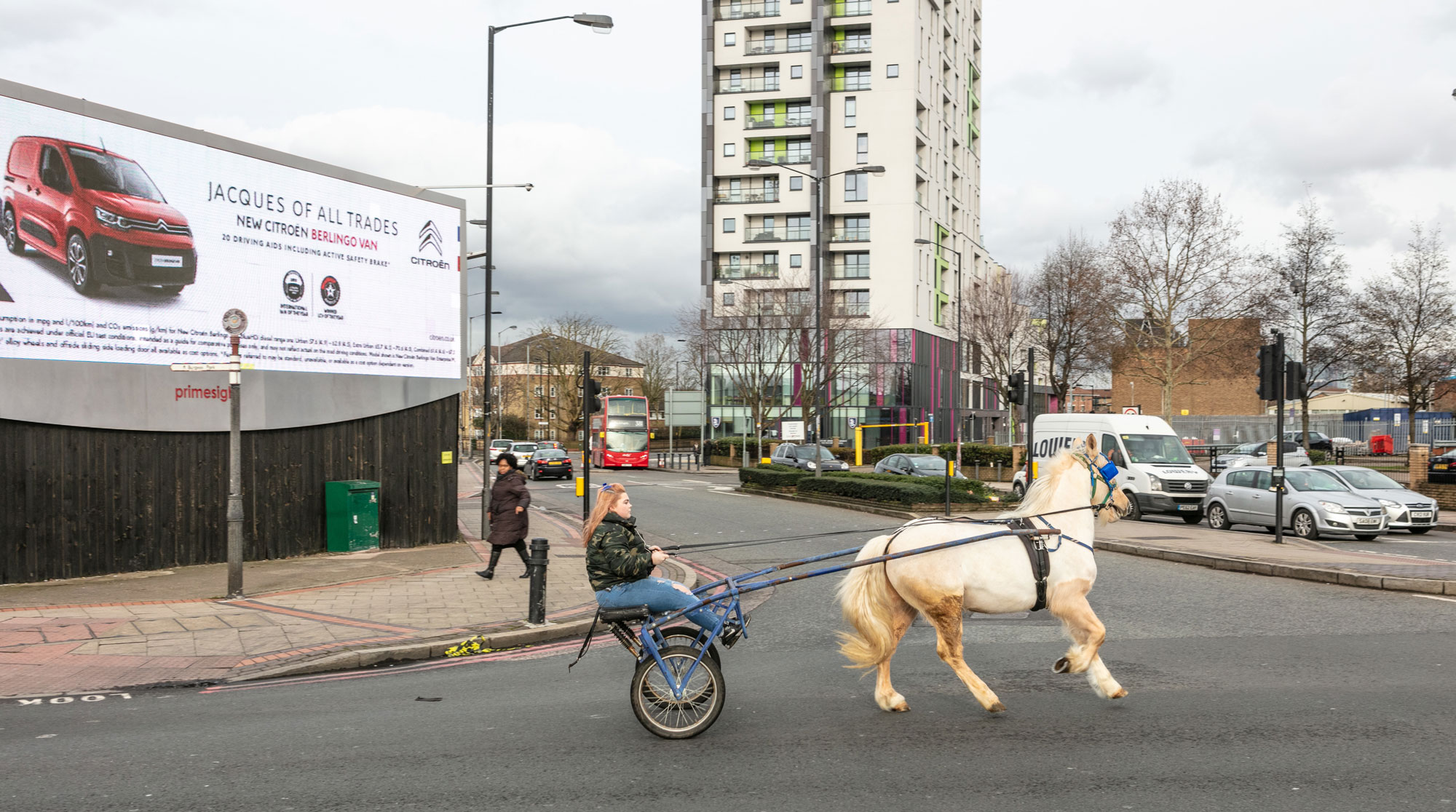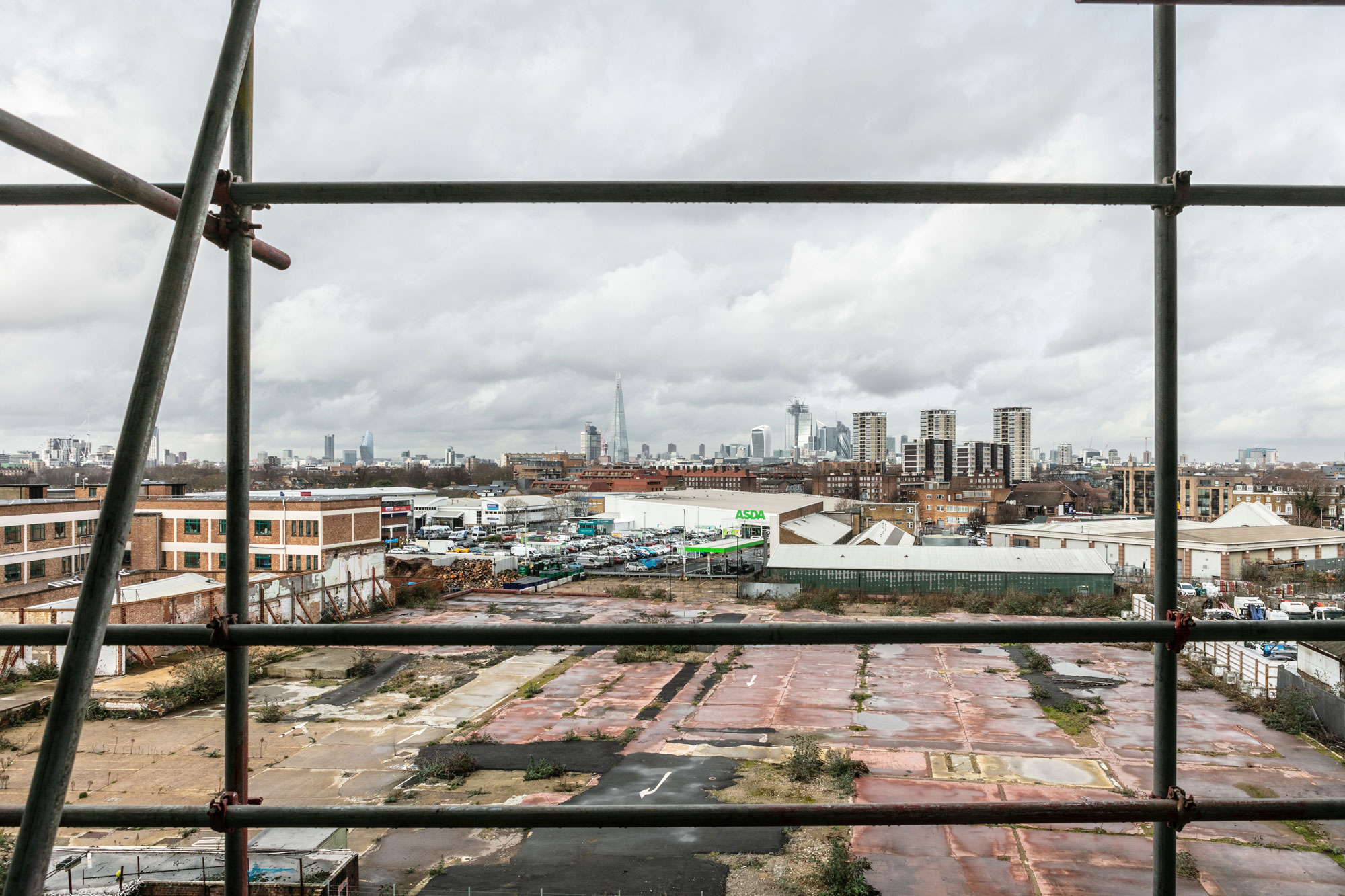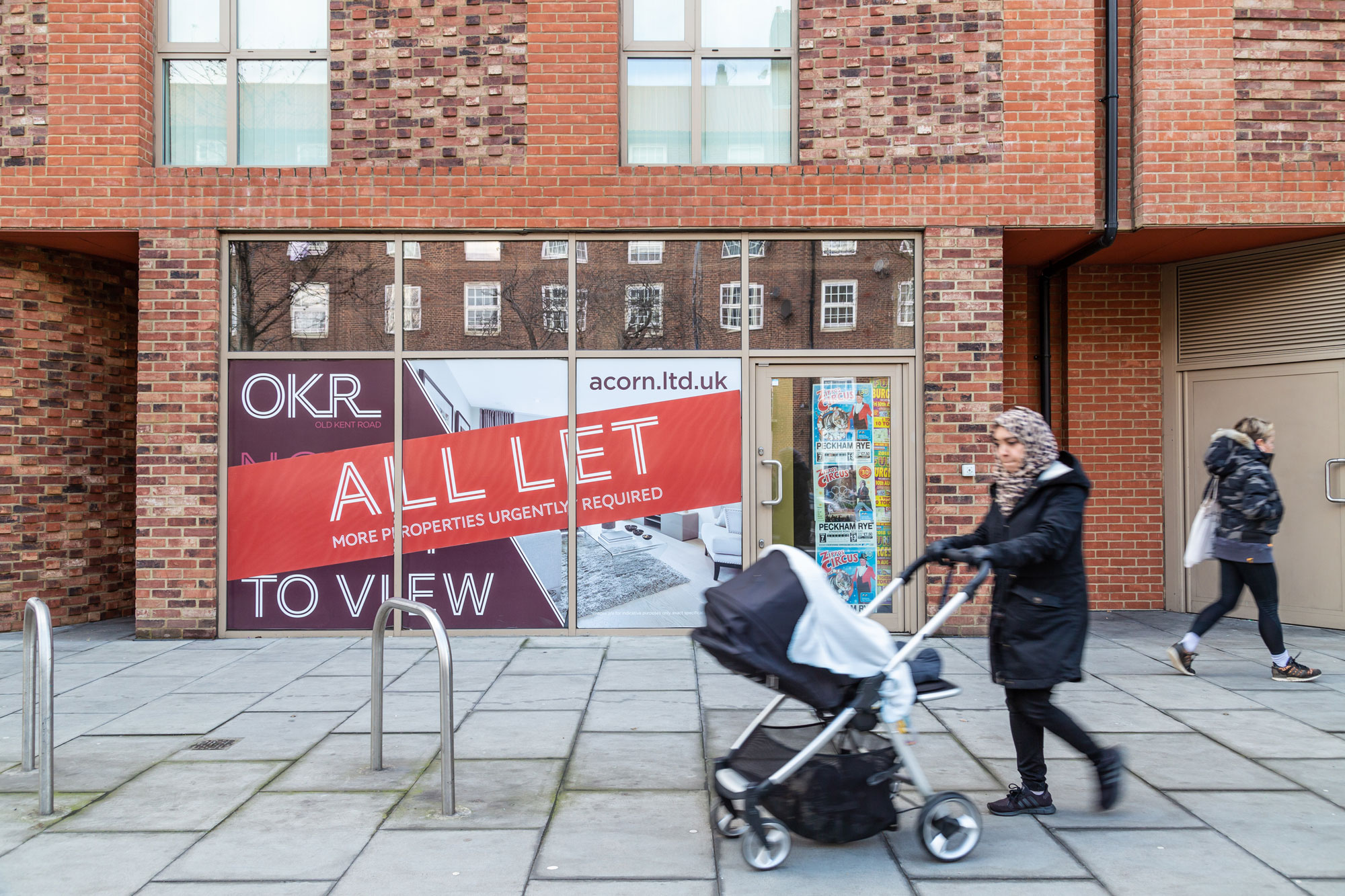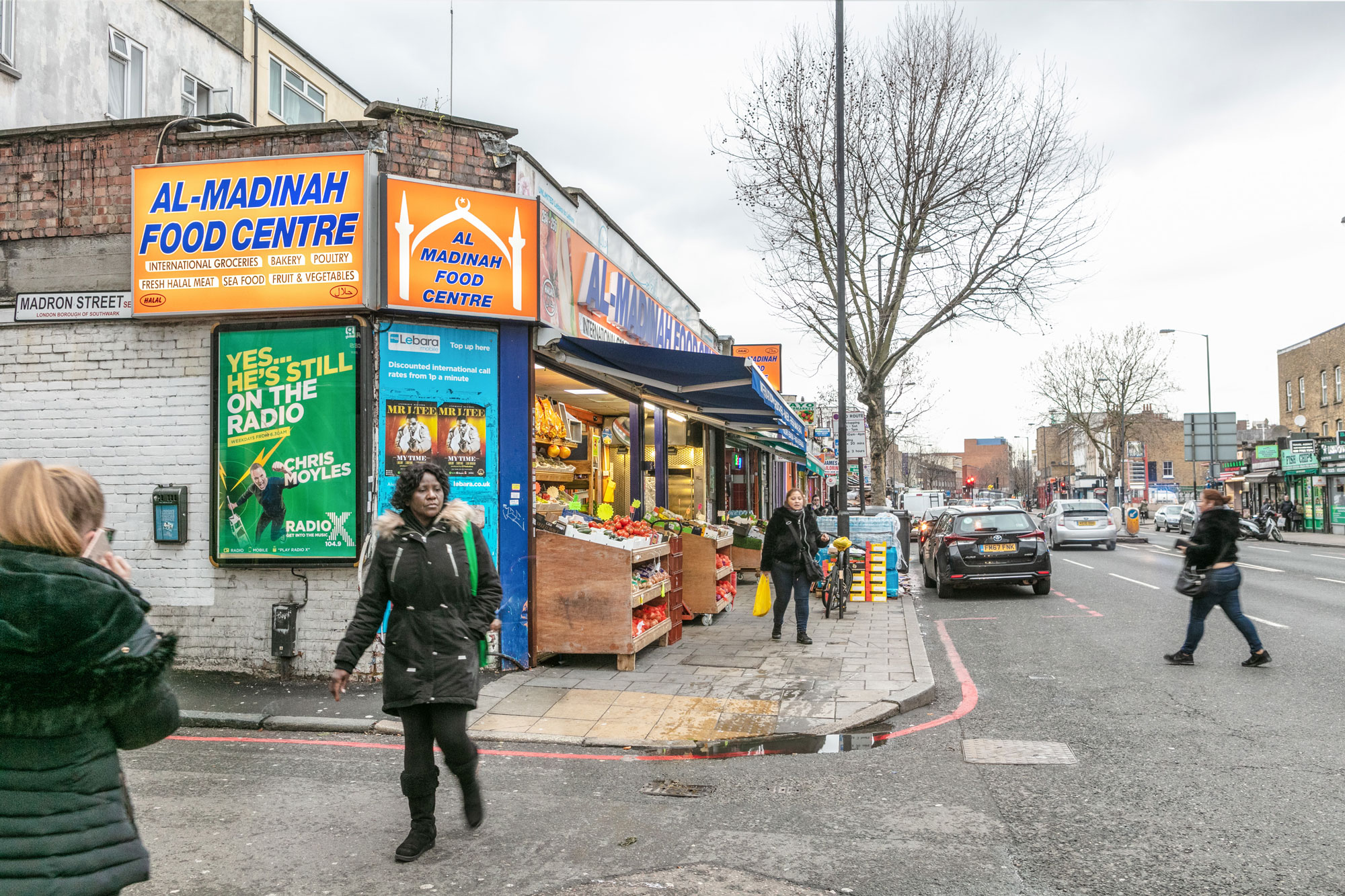Get updates from The Developer straight to your inbox Yes, please!
Huge change is coming to Old Kent Road: how will it cope?
High-rise regeneration proposed by Southwark Council is coming to this low-rise neighbourhood. Jessica Cargill Thompson reports, with photography by John Sturrock
On 29 October, at a meeting of the London Borough of Southwark’s planning committee, property developer Avanton, supported by Southwark’s planning department, put forward a game-changing scheme for a 1.42ha site on the Old Kent Road (OKR), in south London. Its talking point was two high-rise towers, 48 and 40 storeys tall – a radical departure in scale for an area dominated by low-rise terraces, industrial sheds and car park-based retail.
Unsurprisingly, there was fierce local opposition. Residents showed how the towers would cast their homes into shade, and expressed fears of a canyon-like feel to streets and wind tunnels between the buildings.
Factory owner and planning professor Mark Brearley, of business group Vital OKR, argued that the new provision on the site for light industry did not meet the practical needs of the local industry already there and therefore added up to a net loss of industrial space, forcing businesses out.
The three ward councillors countered that the provision of 1,152 new residential units would contribute significantly to local housing need, and hence they would recommend it for approval. After two hours, and to jeers from observers, the scheme was passed.
What was on the line that evening was not merely the details of a single residential scheme. The Ruby Triangle was the test case for huge change that is about to sweep down the Old Kent Road. As the first of a raft of high-rise proposals for the area to go before planning, what was decided would set a precedent for forthcoming major regeneration.
The question is how to add roughly the contents of a small town to an existing community without destroying it
The two-mile stretch has been identified by the Greater London Authority as an Opportunity Area – brownfield land ripe for redevelopment. A draft Area Action Plan (AAP), last updated in December 2017, aims to create 20,000 new homes, 10,000 new jobs, and municipal amenities such as a new further education college, a health centre, schools and “a major cultural attraction”. Alongside the Avanton scheme at the Ruby Triangle, there are proposals by Berkeley Homes for 11 blocks, up to 48 storeys high, where there is currently the light industrial area of Malt Street; and two blocks of flats of 36 to 48 storeys proposed by Galliard Homes and Aviva where there is currently a B&Q and Topps Tiles.
Much of this hinges on the £3.1bn extension of the Bakerloo line through the area, which will itself drive further change. The question is, how to add roughly the contents of a small town to an existing community without destroying it.
Change on the vast scale proposed by the AAP always risks obliterating the fine-grained histories and identities, as well as displacing people and activities, even more so when those activities have traditionally been associated with working-class culture (pubs, boxing gyms, cafés, industry, rail yards, gasworks), dirt (industry, traffic), and cheapness (social housing, multi-ethnic food shops and low-cost supermarkets) – the sorts of everyday activities that are essential to the functioning of a city and its citizens, but not the attractions house builders might want to feature in their marketing brochures.
Colin Wilson, head of regeneration for the Old Kent Road, is aware he has a delicate balance to oversee: “One of the things I’m really keen on is that it doesn’t involve a clean-slate approach, where you don’t value the things that are here already. My experience with developments in other parts of London is that they can easily slip into that. The assumption is that there is a big red line around the area, everything’s going to get demolished and everything’s going to be new. And then when it’s finished everyone wonders why it feels a bit soulless.”
He continues: “I think the great strength of the area that we’re trying to build on is the eccentricity it inherits from its history. A big criticism I’ve come across about regeneration projects is that they’re too polished, and they’re too perfect in a neat architectural way. There’s plenty of scope in OKR for that incident and eccentricity to be part of the future, which would make it an interesting place to be in and be around.”
One of the most contested aspects of the ambitious AAP is its vision for the future of the area as populated with high-rise buildings. While the less imaginative protagonists see building tall as the easiest way to achieve the densities and housing supply needed, many locals feel that a high-rise skyline is out of keeping with an area where the current tallest tower is a diminutive 14 storeys. And that is before natural concerns raised about residential high rises following the 2017 Grenfell Tower fire.
Wilson argues that just because there aren’t currently towers in the area, location within London’s fairly central Zone 2 means they aren’t inappropriate. “One of the things we wanted to do in the 2017 AAP,” he says, “was to make clear that as an authority we were proposing buildings that were completely unlike anything else on the Old Kent Road. We are not saying that with buildings of 150m there is an existing context that you can refer to. I think the point we’re making is that the Old Kent Road is part of central London. This is not suburban.”
“One of the things I’m really keen on is that it doesn’t involve a clean-slate approach, where you don’t value the things that are here already”
Colin Wilson, head of regeneration, Old Kent Road
To play devil’s advocate for a moment, he has a point. Historically the skyline here was dominated by towers – those of the Southern Metropolitan Gas Company. From B&Q on the Cantium Retail Park, the City, just over a mile away, looks close enough to touch. Perhaps the drama of extreme verticality is just a 90-degree flip of the area’s current wide-skied, linear-road horizontality. But everyday life is not a theoretical exercise, it is about how people will feel when they are walking down the street.
At Ruby Triangle, Omer Weinberger, managing partner at Avanton, thinks his towers have a place within the context of the overall action plan. “If you just put one tall building there it would be, ‘Wow, what is this?!’ but within the right townscape design and in the context of a housing shortage, and in an area which is preserved to a degree, it’s possible it will work.”
To avoid creating a new development completely unconnected to its location, Weinberger is keen to work with what is currently on the site, rehousing the remaining church, as well as providing new, light industrial spaces, and artist studios, and encouraging local businesses to take retail space rather than chain supermarkets.
They will also be incorporating the dismantled structure of a gasholder from the nearby site of the former Southern Metropolitan Gas Company, once the area’s largest employer, repurposing it as a sculptural windbreak. “One of the important things about doing large-scale projects is not to forget about your past but to include it in your future,” says Weinberger.
This is not the only development to reach back into the area’s industrial past as a placemaking exercise for its future. Central to Southwark’s AAP is an idea to revive the old Grand Surrey Canal as a new green route running through Berkeley Homes’ Malt Street site. Once running from Surrey Quays to Camberwell and Peckham, the canal was filled in during the 1970s but remains a strong part of the collective memory, with older locals recalling fishing in it for sticklebacks as boys.
Loosely echoing the old route will be what Southwark is labelling a “linear park”, but looks more like a pedestrianised thoroughfare. Designed by landscape architects Fabrik, the route will mimic the language of canals by mixing straight sections (cycle and pedestrian paths) with wharf-like break-out spaces for yet-to-be determined activities. Water features such as play fountains and hard materials such as stone cobbles reference its former incarnation.
While the Old Kent Road contains a surprising number of listed buildings, many others fall outside official protections, meaning the owner could legally demolish them without seeking permission. The Southwark Council team has begun issuing ‘Article 4 directions’ to structures of interest, such as a former horse hospital that is one of the few buildings left from the area’s vast Bricklayers Arms railway sidings. In addition, Southwark has requested that landmarks such as the brick chimneys on Glengall Road be incorporated into any new development plans.
Appreciation and protection of subtler aspects of the Old Kent Road’s heritage are to be welcomed, but authenticity of place is compromised when these heritage structures are removed from their original context – reassembling the gasholders on a different site, or maintaining a cobbled street in the middle of new high rises. Get it wrong and you end up with a theme park approach to placemaking.
A big criticism of regeneration projects is that they’re too polished in a neat architectural way. There’s plenty of scope in OKR for incident and eccentricity to be part of the future
Also, saving the physical fabric is not the same as preserving the activities taking place in an area, with an estimated 1,000 businesses doing everything from specialist chroming to making Christmas decorations for London’s West End. As Brearley has noted in his formal response to the AAP: “I am alarmed by what I see in the draft Old Kent Road AAP because the clear assumption is that businesses like my own [handmade trays] are no longer relevant, are expendable, and can expect to be swept aside… Change on the scale anticipated for the Old Kent Road area should be considered with care, and should be investigated and discussed at length, in dialogue with the people who have a stake in its future.”
One key business currently struggling is the motor trade, built up to service what is also the A2 to Dover. One tyre seller on a site earmarked for more modest redevelopment thinks his days on the Old Kent Road are numbered. “There used to be quite a few sorts of mechanic-type places dotted around but they’re all moving on or dying out.
“We do need houses, but a lot of the little businesses are getting pushed out; there’s nowhere else for us to go in this area. When this place gets redeveloped, it’s not going to be for myself or for my tyres. It will probably be a Costa Coffee and there will a place for two or three little artist studios to come in and stuff like that. People don’t want the dirty motor trade, not really.”
Local residents also fear being pushed out. In The Lord Nelson, one of only two old-school pubs left on the Old Kent Road itself, the sentiment towards the imminent regeneration is, “It’s not for the likes of us.”
‘Brian’ says it is impossible for his grown-up son to get a social housing place, but doesn’t trust the council to either listen to his concerns or provide something affordable. Another drinker has already noticed the effects of new developments in nearby Bermondsey: “The whole atmosphere’s changed really. So many people live round here that aren’t from the area – it’s almost like a new town. It’s not a UKIP rant, it’s just quite trendy now. What are they called? Yuppies – all over the place.”
“When this place gets redeveloped, it’s not going to be for myself or for my tyres”
Local business owner
While it may be tempting in regeneration narratives to regard down-at-heel places such as the Old Kent Road as being empty, of lacking any ‘important’ functions, the reality is more complex, a palimpsest of histories and multiple identities struggling to achieve coherence.
As disciples of Jane Jacobs and Richard Sennett know, cities are naturally messy places, and the Old Kent Road has messiness in spades. Undeniably it could benefit from a little TLC, but scale-shifting schemes such as the Ruby Triangle and the Berkeley Homes redevelopment might minimise their disruption by using what is there now to inform what will be there in the future, embracing local residents and businesses.
What’s needed is not just a few heritage assets, but a deep understanding of the social, historical and economic make-up so that a more fundamental identity, based on people and activities, can endure.
Sign up to our newsletter
Get updates from The Developer straight to your inbox
Thanks to our organisation members
Become a member
© Festival of Place - Tweak Ltd., 124 City Road, London, EC1V 2NX. Tel: 020 3326 7238
